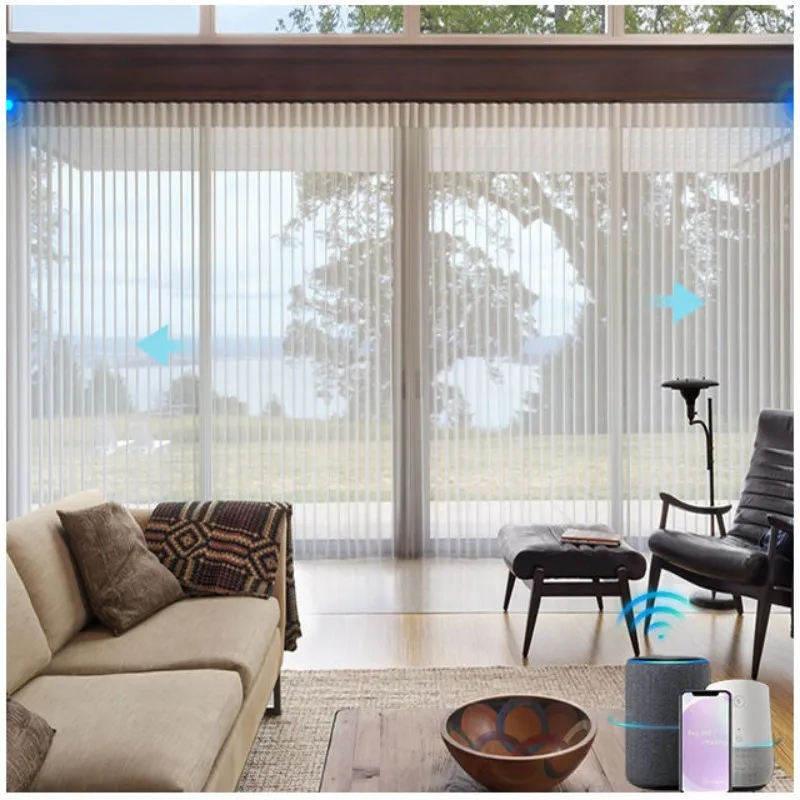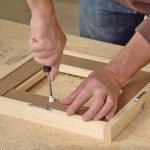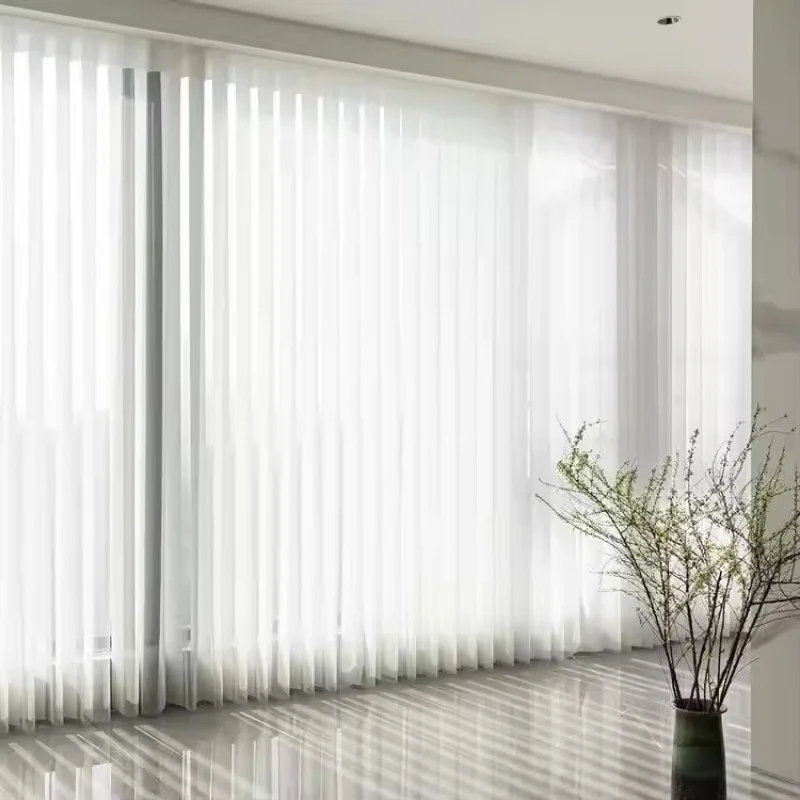Introduction to Vertical Blinds
Vertical blinds, a stylish and functional window treatment, have grown in popularity. These blinds offer excellent control over light and privacy in any room. From homes to offices, vertical blinds can enhance both aesthetics and usability.
What Are Vertical Blinds?
Vertical blinds consist of long, vertical slats attached to a headrail. You can adjust these slats to control light and privacy. They come in various materials, each providing a unique appearance and function.
Types of Vertical Blinds
Vertical blinds are available in several materials:
- Fabric: Light and easy to maintain, available in many colors.
- Vinyl: Durable, waterproof, and ideal for sunny or moist areas.
- Wooden: Adds a classic touch but requires care to prevent moisture damage.
Each material offers distinct advantages, allowing you to choose based on your specific needs and room decor.

Tools and Materials Required
For a smooth installation of vertical blinds, collecting the right tools and materials is crucial.
Essential Tools for Installation
Ensure you have these on hand before beginning:
- Power Drill: For drilling holes; easy mounting.
- Measuring Tape: Enables accurate sizing; no guesswork.
- Level: Guarantees even, straight installation.
- Screwdriver: For securing brackets and components.
- Safety Brackets and Screws: These keep the blinds firmly in place.
Gathering these tools helps prevent mid-process trips to the store.
Components of Vertical Blinds
Understanding what’s included is essential:
- Headrail: The base that supports the slats.
- Vanishing Slats (Louvers): They control light and privacy.
- Brackets: Secure the headrail; come in various sizes.
Each part plays a role in the blinds’ function and aesthetics. Ensuring you have all components ready makes installation straightforward.
Measuring Your Windows
Measuring your windows accurately ensures that your vertical blinds fit perfectly. Proper measurement is foundational; it dictates the sizes of the vertical blinds you’ll purchase, affecting the overall look and functionality of the window treatments. Below, we discuss detailed steps and common mistakes to avoid for a flawless measurement process.
Steps for Accurate Measurement
- Measure the Width: Use a measuring tape. Measure the inside width of your window frame at the top, middle, and bottom. Record the narrowest measurement.
- Measure the Height: Measure the height at the left, middle, and right side of the window frame. Use the shortest measurement.
- Check Depth: Ensure there is enough depth in the window frame for mounting the brackets. This measurement is crucial for inside-mount vertical blinds.
- Note Special Features: Account for any unique features in your window, such as handles or unusual shapes.
Common Measuring Mistakes
- Ignoring the Smallest Width and Height: Always use the smallest width and height measurements to avoid sizing issues.
- Forgetting the Depth: Lack of sufficient depth can prevent proper installation of brackets for inside mounts.
- Not Considering Obstructions: Factors like window handles can impact the fit and operation of your blinds. Measure taking these into account.
- Using a Dressmaker’s Tape: For accuracy, use a rigid measuring tape instead of a flexible dressmaker’s tape.
Purchasing Your Vertical Blinds
Choosing the right vertical blinds is key to ensuring they meet your needs for light control, privacy, and style.
Choosing the Right Blinds
When shopping for vertical blinds, consider your room’s needs and decor style. From light-filtering to room-darkening options, select blinds that best suit your space. Here are some points to guide you:
- Measure Properly: Double-check your window measurements before making a purchase.
- Match Your Decor: Consider materials and colors that complement your existing interior.
- Light and Privacy Control: Decide if you prefer sheer or opaque slats for varying levels of sunlight and seclusion.
- Ease of Maintenance: Pick materials that are simple to clean and maintain.
Remember, fabric works well for a soft look, vinyl is great for durability, and wood adds elegance. Each material has its pros and cons, so choose wisely.

Where to Buy Vertical Blinds
You can buy vertical blinds both online and in physical stores. For the best experience:
- Read Reviews: Look at customer feedback for quality assurance.
- Check Policies: Review return policies and warranties for peace of mind.
- Compare Prices: Shop around to find the best deals for your budget.
Stores often offer expert advice and customization options. Online, you might find wider selections and digital tools to preview your choices. Weigh the benefits of each to decide the best place for your purchase.
Step-by-Step Installation Guide
Embarking on your DIY journey to install vertical blinds? Follow this guide to navigate the simple yet precise process.
Preparing for Installation
Kick-off by gathering your tools; ensure the power drill, measuring tape, level, screwdriver, brackets, and screws are within reach. Clear the area where you’ll work, making sure it’s free of dirt and obstacles. Lay out all your vertical blind components and double-check against your purchase list. Read installation instructions fully to prevent mishaps. For safety, secure a sturdy ladder if height is a challenge and don safety goggles to protect your eyes.
Installing Inside Mount Vertical Blinds
Inside mount installation is ideal for a sleek, built-in look. Start by measuring your window to determine the right size. Drill pilot holes into the window frame where the brackets will go. Screw the brackets securely in place. Snap the headrail into the brackets. Hang the slats onto the headrail, one by one, checking they’re even. Use the tilt wand or cord to adjust slat angles suitably.
Installing Outside Mount Vertical Blinds
Choose outside mount for broader window coverage. Mark where brackets will sit above the window. Make sure they align levelly. Drill holes for screws, attach brackets, and ensure they’re tight. Mount the headrail onto the brackets. Hang each slat with care, confirming they’re spaced out evenly. Adjust slats to let in the perfect amount of light. Once installed, test the blinds to confirm they operate smoothly.
Incorporate these practical steps and you’ll have your vertical blinds enhancing privacy and style in no time.
Troubleshooting Common Installation Issues
Even with careful planning and preparation, you might encounter a few hiccups when installing vertical blinds. Here are common installation issues and how to resolve them effectively.
Aligning Brackets Correctly
To avoid uneven blinds, ensure the brackets align properly. Use a level to check alignment before drilling. Measure both sides of the window to make sure the marks are equally distanced from the frame top. Double-check measurements and placement with your level after mounting the first bracket for perfect alignment. If adjustments are necessary, loosen the screws slightly, adjust, and then tighten.
Adjusting Slats and Headrails
After mounting, the slats or headrails might need adjustments for smooth operation. If slats hang askew or operate stiffly, check if the headrail is level and secure. Loosen the fittings slightly, adjust, and retighten. For stuck or hard-to-move slats, a silicone spray can help them glide smoothly. Always ensure slats are evenly distributed for balanced light and privacy control.

Maintaining Your Vertical Blinds
Proper maintenance keeps your vertical blinds looking great and functioning well.
Regular Cleaning and Maintenance Tips
To maintain blinds, follow these simple steps:
- Dust Weekly: Gently wipe slats with a soft cloth or duster.
- Spot Clean: Use mild detergent for stains on fabric or vinyl slats.
- Vacuum with Attachment: Remove dust from fabric vanes carefully.
- Check Mechanisms Monthly: Ensure the tilt wand and cords work smoothly.
- Inspect Slats: Look for any damage or warping periodically.
Regular upkeep avoids bigger issues and extends your blinds’ life.
Replacing Parts When Needed
Sometimes, parts break or wear out. Here’s how to handle replacements:
- Replace Slats Individually: Order matching slats to swap out damaged ones.
- Tighten Loose Brackets: Secure brackets back if they come loose.
- Renew Headrails: Get new ones from suppliers if they malfunction.
- Update Lift Cords: Change frayed or worn cords for safety.
Keep spare parts handy for quick fixes to keep blinds optimal.
Conclusion and Additional Tips
After going through the installation process of vertical blinds, it’s important to recap and consider some additional tips that will help ensure a successful project. Besides the installation steps, safety measures and post-installation advice can significantly improve your experience with your new window treatments.
Reinforcing Safety During Installation
Safety should never be an afterthought when installing vertical blinds. It’s essential to prioritize it to prevent accidents and ensure a smooth installation process. Here are some top safety tips to keep in mind:
- Use Proper Equipment: Always work with reliable tools and ensure ladders are stable.
- Wear Safety Gear: Wear protective eyewear when drilling to shield your eyes from dust and debris.
- Check Your Surroundings: Before drilling, identify any potential hazards such as electrical wiring or pipes.
- Don’t Rush: Take your time during installation to avoid errors that could lead to accidents.
- Ask for Help: Don’t hesitate to get an extra pair of hands, especially when mounting the headrail.
- Keep Children Away: Ensure kids are not in the installation area to prevent any mishaps.
By keeping these safety tips in mind, you can complete the installation of your vertical blinds without any issues. Remember, taking the time to install your blinds correctly and safely will not only result in a more attractive and functioning window treatment but will also ensure it lasts for years to come.








